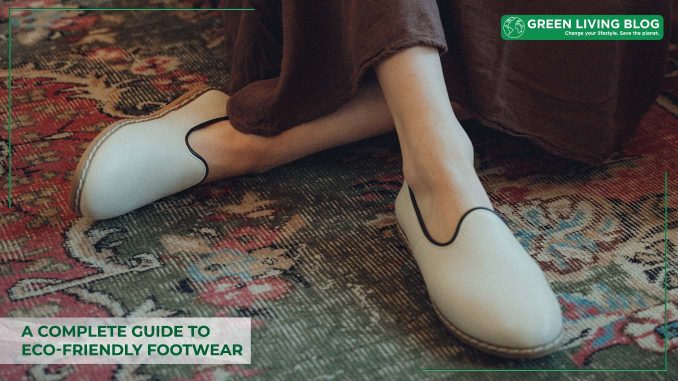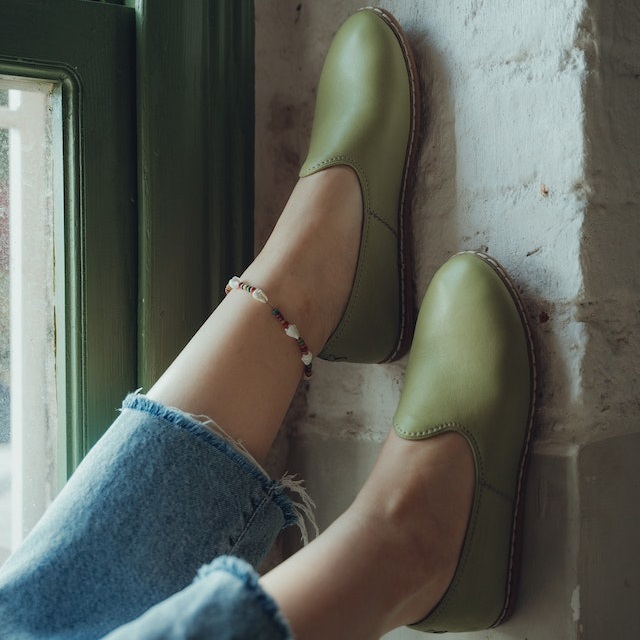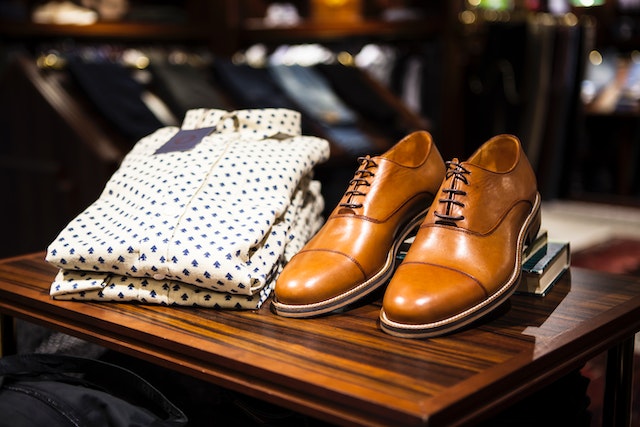
Have you ever thought about your ecological footprint?
Yes, your literal environmental footprint! While it’s not something we consider often, our shoes may be having a bigger impact on the environment than we may think.
In 2021, over 22.2 billion pairs of shoes were manufactured worldwide. Multiply that by the average sneakers’ carbon footprint of 30 pounds of carbon dioxide released per pair, and a striking image of the real impact of your shoes begins to emerge.
Luckily, there are plenty of manufacturers that make more sustainable shoes, from sneakers to high heels and everything in between.
Today, we’ll review how to understand whether a pair of shoes is truly sustainable – and why buying sustainable footwear is so important.
Why Buy Sustainable?

Manufacturing one pair of running shoes releases the equivalent amount of carbon to keep a 100-watt light bulb turned on for a whole week. But a high carbon footprint isn’t the only thing that makes conventional shoes unsustainable. Every year, around 300 million pairs of shoes are thrown away and most of them end up in a landfill. It can take between 25 to 40 years for one shoe to decompose, and it’s estimated that some soles spend around 1000 years in a landfill.
Buying sustainable shoes helps fight climate change and reduce the amount of precious land space that landfills take up. Eco-friendly shoes also help reduce the number of toxic chemicals that leach from footwear manufacturing or shoes discarded in landfills into our water, air, and soil.
What Makes a Shoe Sustainable?
A shoe’s sustainability must be evaluated at every stage of its life cycle, from procuring raw materials to disposal.
Material
Many conventional shoes are made from synthetic materials that are originally derived from plastic – and thus from fossil fuels. One of the easiest things to check when buying sustainable shoes is what material the shoe is made from. More sustainable material options include:
- Recycled plastic or other recycled materials
- Bamboo
- Organic cotton
- Other natural materials like cork, hemp, or plant-based leather
Many shoe companies are innovating new sustainable materials that are just as sturdy and stylish as traditional ones. For example, some companies are beginning to sell leather shoes made from leather produced by cacti or other plants.

Manufacturing
According to a 2012 study from MIT, around two-thirds of a sneaker’s carbon footprint comes from the manufacturing process, rather than raw materials. This is large because many shoes are produced in China, a country that relies heavily on coal for electricity. Creating shoes is extremely energy intensive, so producing a single pair results in high-carbon costs when the process is powered by coal.
Sustainable shoes, on the other hand, are made using renewable energy sources to power the manufacturing process. This may include wind power, solar power, or other forms of renewable energy. It’s also important that the shoes are produced in a way that doesn’t release pollutants like toxic dyes or chemically-contaminated wastewater. You may also consider buying from companies that use carbon offsets to help reduce their climate impacts.
So, what does this mean for consumers? After all, for shoppers, it’s much easier to understand what materials a shoe is made from than to understand how a shoe is made in the first place. Ensuring that your shoes are being produced in a low-carbon way often requires a little extra research into the brand’s manufacturing practices. For example, it may be a good idea to purchase shoes that have been tested in an unbiased third-party footwear testing laboratory for quality and sustainability.
While this type of sustainability research deep-dive can be time-consuming, there are also online directories that already have done the research for you. For example, the Good On You Directory provides information on a variety of shoe and apparel brands’ ethical and sustainable practices and provides overall sustainability ratings to help you make better purchasing decisions.
Packaging and Distribution
Another area of the footwear industry that can lead to carbon emissions and other environmental impacts is how the products are packaged and distributed. Avoid buying shoes that come in plastic packaging, and instead, opt for shoes that are packaged in recyclable materials like cardboard.
Transporting shoes over long distances also emits carbon. When possible, buy shoes that are produced locally and avoid causing unnecessary shipping. For example, try to buy them in the right size, rather than buying several pairs to try on, so you don’t have to return the shoes by mail and increase carbon emissions from your purchase. Of course, this isn’t always possible, but just do your best!

End-of-Life
Finally, how we dispose of shoes when we’re done with them impacts how sustainable they are. As we discussed above, shoes can last a long time in landfills and may leach chemicals from the landfill into the environment.
By recycling old shoes through a recycling program, you can help ensure the materials are reused and don’t just sit in a landfill. You can also consider donating your gently worn shoes so that someone else can give them new life.
What Can You Do?

Here are a few helpful tips to help you lower the environmental impact and carbon footprint of your footwear.
- Buy used shoes. While this may sound unsanitary, there are plenty of ways to clean gently used footwear. Buying second-hand helps reduce the number of new shoes that must be produced, and thus keeps your carbon footprint lower.
- Buy eco-friendly shoes. Do your research into a brand before purchasing to make sure that they are taking the necessary steps to make their practices more sustainable.
- Dispose of your old shoes properly. When your shoes get worn out, you don’t necessarily have to throw them out. Instead, investigate recycling programs that will take your old shoes and get new use out of them. For example, the old rubber from your shoes’ soles can be turned into gym floors or tennis courts.
With the above tips, you should be on your way to choosing eco-friendlier footwear options and fortunately, there are now also many green apps available that can help with making more sustainable retail choices.
![]()
Author Profile
- Online Media & PR Strategist
- Blogger and Educator by Passion | Senior Online Media & PR Strategist at ClickDo Ltd. | Fascinated to Write Lifestyle Blogs in News & Education I have completed a journalism summer course at the London School of Journalism and manage various blogs.
Latest entries
 Green GuidesMay 29, 202519 Best Eco-Friendly Products, Services & Gifts – With Special Deals
Green GuidesMay 29, 202519 Best Eco-Friendly Products, Services & Gifts – With Special Deals List postMay 28, 202510 Everyday Items with PFAs (‘Forever Chemicals’) and Green Alternatives
List postMay 28, 202510 Everyday Items with PFAs (‘Forever Chemicals’) and Green Alternatives List postMay 22, 20258 Eco-Friendly & Energy-Saving Home Gadgets for Daily Routines
List postMay 22, 20258 Eco-Friendly & Energy-Saving Home Gadgets for Daily Routines Green LivingMay 15, 20258 Healthy BBQ Swaps for a Cleaner, Greener, Guilt-free Grillfest
Green LivingMay 15, 20258 Healthy BBQ Swaps for a Cleaner, Greener, Guilt-free Grillfest






Leave a Reply
You must be logged in to post a comment.